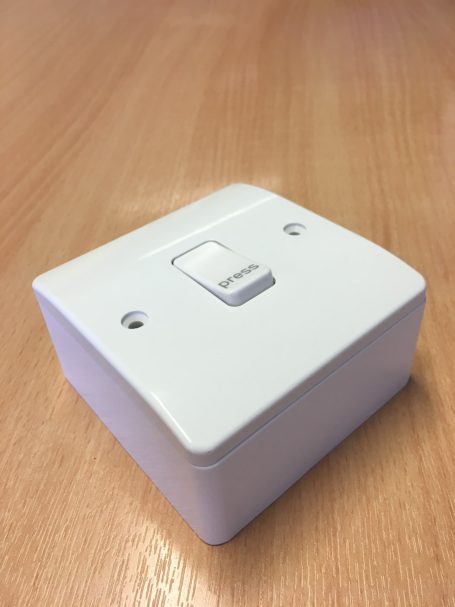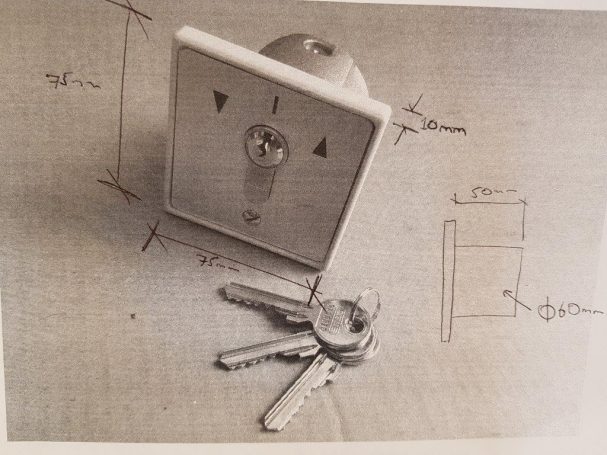info@roller-shutter.uk 01392270218

Roller Shutter Controls: Choosing the Right Operation for Your Security Shutters
Selecting the correct control system for your roller shutters is essential for safety, convenience, and long-term reliability. At HVP Security Shutters, we offer a comprehensive range of control options to suit every environment, from busy industrial units to residential garages. Below, we outline the main types of roller shutter controls, their features, and important safety considerations for specifiers, contractors, and end users.
There are multiple ways to now control a roller shutter, from the standard key switch to remote control or operating shutters from your phone or iPad.
Below are the standard options of operating a roller shutter. We can set up any of our roller shutters ready for an automation company to set for any automatic operation.
Key Switch Operation
How it works: Requires a key to be inserted and turned in the ‘up’ or ‘down’ direction to move the shutter.
Safety: Configured as ‘hold to run’—the key must be held in position for the shutter to operate. Removing your hand returns the switch to neutral and stops movement.
Security: The key can only be removed in the neutral position, reducing the risk of accidental or unauthorised use.
Rocker Switch Operation
How it works: A keyless, sprung switch that must be rocked in the indicated direction to operate the shutter.
Safety: Always installed as ‘hold to run’ to ensure the operator is present during movement.
Placement: Must be positioned out of reach of children.
Push Button Control Unit
How it works: Commonly used for industrial shutters; features separate ‘up’ and ‘down’ buttons, with some models including a ‘stop’ button.
Security: Some units require a key for operation.
Safety: Should be ‘hold to run’ unless fitted with additional safety devices (e.g., bottom rail safety edge) for ‘impulse’ operation. Always positioned beyond children’s reach.
Remote Control Operation
How it works: Wireless handheld units transmit signals to a receiver at the shutter. Can be set for ‘hold to run’ (button held throughout operation) or ‘impulse’ (press once to operate).
Safety: ‘Hold to run’ is recommended for most applications. If using ‘impulse’ or if the shutter is not visible during operation, safety devices such as a bottom rail safety edge must be installed.
Convenience: Ideal for residential and commercial applications needing flexible access.
Group Control
How it works: Operates two or more shutters simultaneously via a single control method.
Safety: Essential to fit devices such as photocells or sensitivity edges, as the operator may not have full visibility of all shutters in motion.
Safety Configurations Explained
‘Hold to run’: The control must be held in position for the shutter to move. This ensures the operator is present and monitoring the shutter’s travel at all times.
‘Impulse’: A single press will move the shutter to its end position unless stopped. This configuration requires robust safety devices to protect people and property.
For further details on safety devices, please see our dedicated section on roller shutter safety.
Why Proper Control Selection Matters
Compliance: All controls are specified and installed in accordance with UK safety standards and best practices.
User Safety: Proper configuration and the addition of safety devices help prevent accidents and unauthorised use.
Convenience: Options range from robust industrial controls to discreet residential remotes, all tailored to your needs.
Expert Advice from HVP Security Shutters
HVP Security Shutters has over 30 years’ experience specifying, manufacturing, and installing roller shutters across the UK. Our team is on hand to advise on the best control system for your premises, ensuring full compliance and peace of mind.
Free site surveys and technical advice
Full documentation and specification support for architects and contractors





